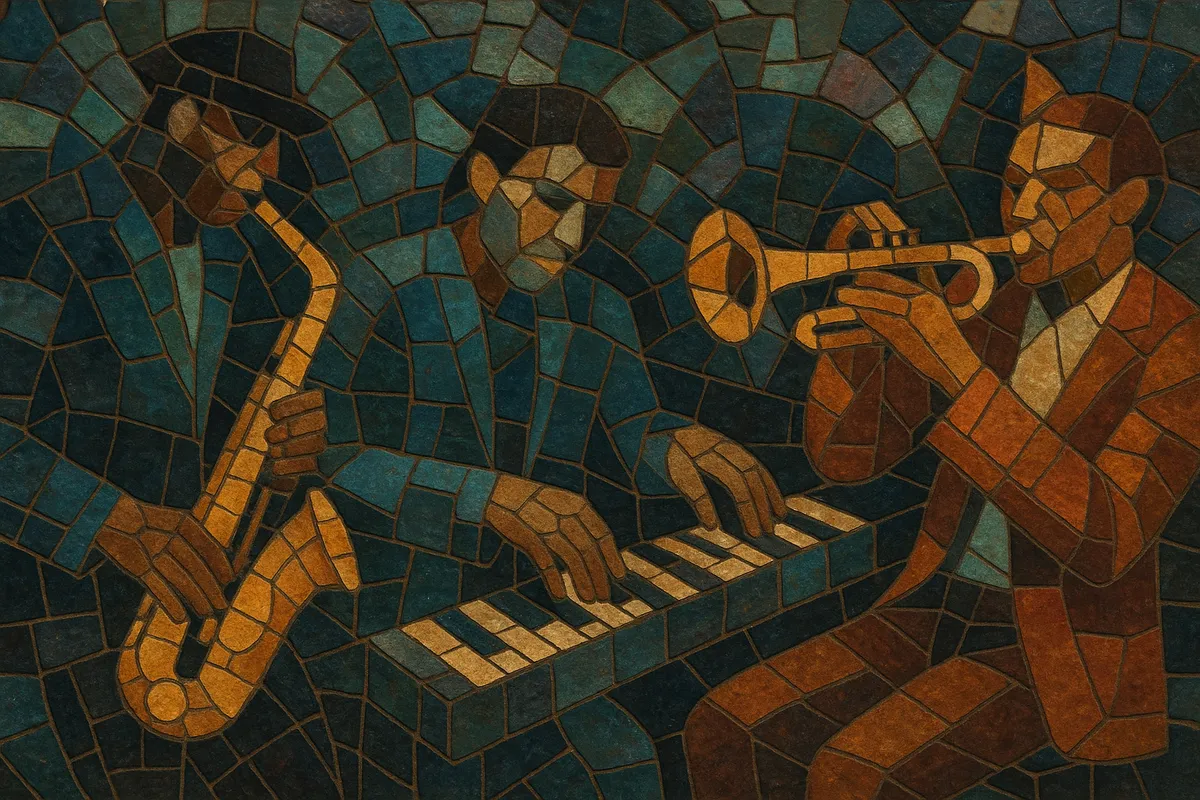Jazzstep is a subgenre of drum and bass that fuses jazz harmony, timbres, and an improvisational sensibility with the fast, syncopated breakbeats of the UK jungle/DnB continuum.
Typical hallmarks include swung and ghost‑noted breakbeats at 165–175 BPM, upright or electric "walking" basslines, lush Rhodes piano or vibraphone chords, and saxophone or trumpet phrases—either sampled from classic sessions or performed anew. Harmonically, it favors extended chords (9ths, 11ths, 13ths), chromatic passing tones, blue notes, and modal colors, giving it a smooth yet propulsive, late‑night club atmosphere.
Compared with adjacent styles like liquid funk, jazzstep leans more explicitly into jazz vocabulary and instrumental colors, while retaining the momentum and dancefloor architecture of drum and bass.
Jazzstep emerged in the United Kingdom as jungle evolved into drum and bass. Producers and labels like LTJ Bukem’s Good Looking Records, Moving Shadow, and V Recordings began pairing rolling breakbeats with jazz chords, upright bass samples, and atmospheric pads. The approach drew on crate‑dug jazz and fusion records, the DJ culture of sampling, and the sophisticated, heady vibe of London clubs.
By the late 1990s, the aesthetic solidified: crisp, edited breaks; airy, cinematic textures; and unmistakably jazz‑inflected harmony and instrumentation. Landmark albums and singles by artists such as LTJ Bukem, 4hero, Peshay, Roni Size/Reprazent, Alex Reece, and Omni Trio showcased how jazzstep could work as both dancefloor music and attentive listening.
In the 2000s, jazzstep’s DNA flowed directly into liquid funk and more melodic strains of drum and bass. Hospital Records (e.g., London Elektricity) and producers like Calibre and Makoto carried the torch with smoother, soulful production while retaining jazz step’s harmonic language. The term “jazzstep” persisted among DJs and listeners to denote DnB with pronounced jazz character, even as cataloging sometimes overlapped with atmospheric DnB and liquid.
Digital distribution and global scene growth spread jazzstep practices well beyond the UK, with notable contributors in Europe and Japan. Its legacy is audible across liquid funk and atmospheric drum and bass, and in the continued use of jazz harmony, live‑sounding instrumentation, and refined break programming within contemporary DnB.


